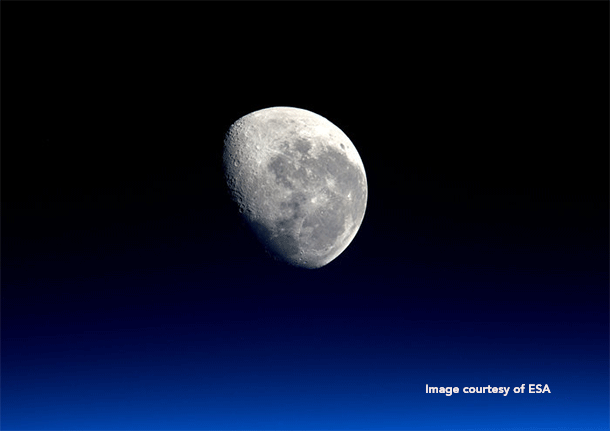GMV working for future lunar exploration

20 July this year marks the 50th anniversary of the historic moment when humankind first trod the moon, widely regarded as one of the most epoch-making feats of all time.
In those days the moon was the main target in the space race between the USSR and USA. In the mid-seventies, however, lunar exploration stalled. From 1958 to 1976 a total of 100 missions were launched to our satellite; in the following 14 years up to 1990, none at all.
From 1990 to 2007 there were only four minor missions to the moon, all involving low-cost light orbiters: a Japanese mission, Hiten; two small American probes, Clementine and Lunar Prospector; and the European technology demonstration probe SMART-1. In the latter GMV played a key role during the design phase and optimization of possible trajectories to the moon, using low-thrust propulsion, a technology then in its infancy. It was also involved in the development and operation of the necessary tools for control of the actual trajectory and orbit insertion of the probe before it was deliberately crashed into the moon’s surface.
In 2007 NASA and other space agencies took a renewed interest in the moon. Since that watershed year there have been four important moon launches: The Japanese Kaguya mission, the Chinese Chang’e 1, the Indian Chandrayaan-1 and America’s Lunar Reconnaissance Orbiter (LRO) mission. This last mission, launched in 2009, marked NASA’s successful return to the moon after a ten-year absence. Its aim was to pave the way for future settlement of the moon, analyzing, among other aspects, the ideal site for a permanent lunar base. GMV’s inhouse product flexplan served as the basis, crucially, for the mission’s planning and programming system.
In recent days the story of lunar exploration has picked up anew and GMV is helping to write its most immediate future. The company is currently actively involved in the development of an autonomous lunar soft touchdown system (PILOT) under ESA/Russian collaboration in the Luna 27 mission. It is also participating in the design of a multi-spectral camera prototype for cislunar-orbit rendezvous and is leading definition of the guidance, navigation and control (GNC) system of HERACLES, a robotic mission to scout the terrain ahead of man’s real return to the moon. This mission is being led by the European Space Agency (ESA) with the collaboration of the Canadian Space Agency (CSA) and the Japanese Aerospace Exploration Agency (JAXA).
The international HERACLES mission’s rover will collect lunar samples for two months, monitored and controlled by the future lunar Gateway, which will then pick up these samples and send them back to earth. After the samples have been sent off, the rover will continue to scout the moon for a whole year in preparation for future crewed missions.
In the HERACLES mission GMV is heading the consortium in charge of designing the guidance, navigation and control (GNC) system for ascent from the moon’s surface, orbit transfer and rendezvous and docking with the lunar Gateway.
At the same time GMV is also responsible for the GNC of the rendezvous and docking phase in one of the two system studies, primed by Thales Italia, being carried out by ESA in parallel to design HERACLES’s rest component.
The mission poses various concurrent technological challenges to do with propulsion, GNC, communications or combined control from earth and from the lunar Gateway. This all adds up to a sterling challenge for Europe’s space exploration itself and will lay down the bases for the future colonization of the earth’s natural satellite and missions to more distant planets.